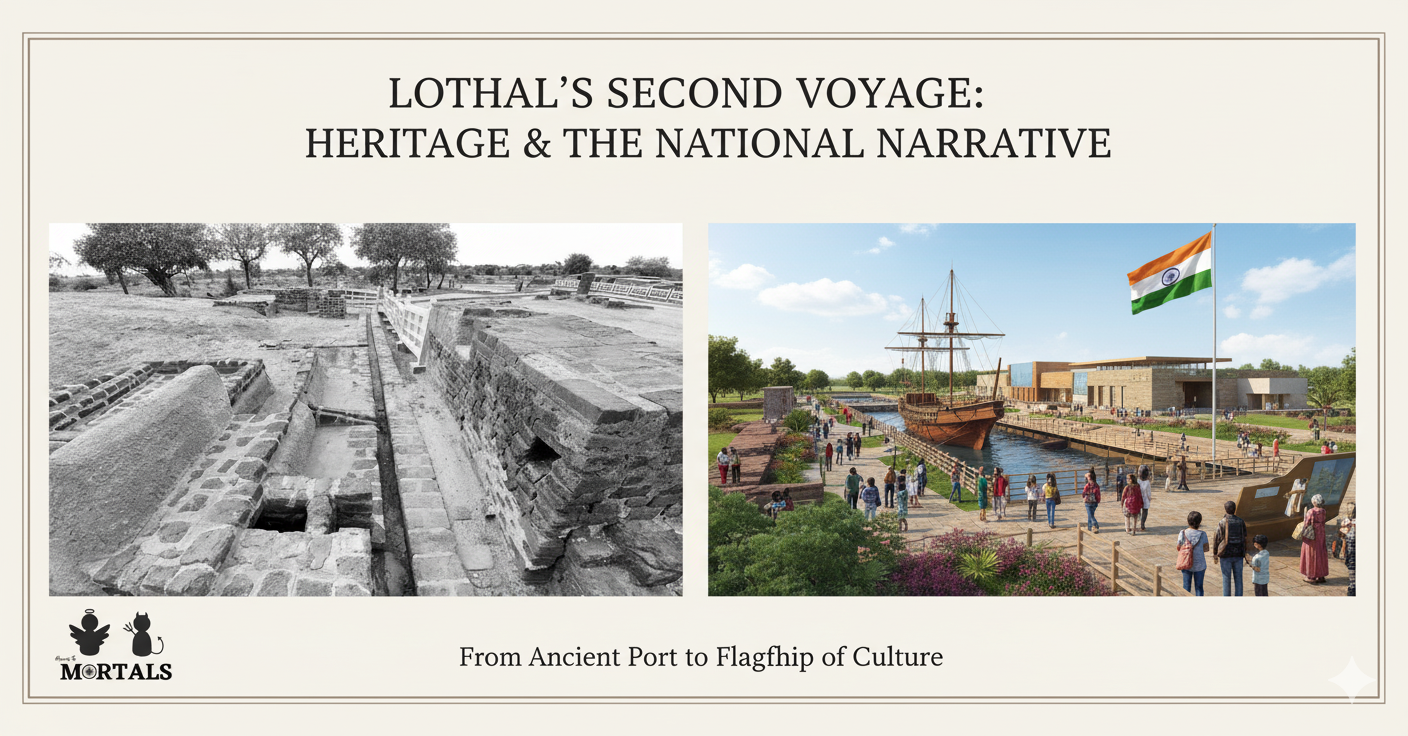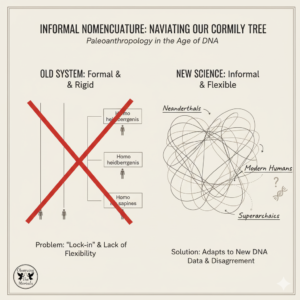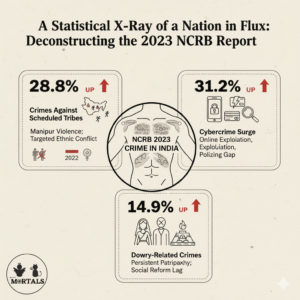For decades, the ruins of Lothal in Gujarat have been a quiet testament to the ingenuity of the Indus Valley Civilization, a silent port frozen in time. Today, this ancient site is buzzing with activity as the stage for a grand modern vision: the National Maritime Heritage Complex (NMHC). The recent review of the project by the Prime Minister himself signals its national importance. This case study explores how this 5,000-year-old Harappan port is being “revitalised” for a second voyage—not with ships of commerce, but as a flagship of cultural policy, designed to construct a powerful narrative about India’s past, present, and future.
The Information Box
Syllabus Connection:
- Paper 2: Chapter 1.1 (Indian Prehistory: Indus Valley Civilization), Chapter 1.6 (Indian Ethno-archaeology)
- Paper 1: Chapter 1.3 (Archaeological Anthropology), Chapter 9 (Applied Anthropology), Chapter 4 (Political Anthropology)
Key Concepts/Tags:
- Lothal, National Maritime Heritage Complex (NMHC), Politics of Heritage, Applied Archaeology, Nation-Building, Indus Valley Civilization
The Setting: Who, What, Where?
Our setting is Lothal, one of the most significant sites of the Indus Valley Civilization (IVC), located in the Ahmedabad district of Gujarat. Discovered in 1954, its most famous feature is a large, meticulously constructed basin, identified by archaeologists as the world’s earliest known dockyard. Today, this archaeological site is the location for the National Maritime Heritage Complex (NMHC), a massive government project to build a world-class museum and educational hub dedicated to India’s maritime history. The project’s high-profile nature, involving the direct oversight of the Prime Minister’s Office, underscores its national significance.
The Core Argument: Why This Study Matters
This project is a powerful case study in how the past is actively used in the present. It illustrates three key anthropological processes:
- From Archaeological Site to National Symbol: The NMHC project is fundamentally transforming Lothal from a passive archaeological ruin, of interest mainly to scholars, into an active, potent symbol of modern Indian identity. The stated goal is to showcase “India’s maritime strength and prosperity,” creating a direct, unbroken line from the Harappan civilization to the aspirations of a 21st-century global power.
- Applied Archaeology as Nation-Building: This is a textbook example of applied archaeology. The knowledge and artifacts unearthed by archaeologists are being purposefully used to achieve specific national goals: to educate the public, to boost heritage tourism, and, most importantly, to construct a particular historical narrative of a long, glorious, and continuous maritime tradition.
- The Politics of Heritage: The immense scale of the project and the direct involvement of the highest levels of government reveal that this is not just a cultural or academic endeavor; it is a political one. The selection of Lothal, the narrative being crafted, and the resources being invested are all deliberate choices aimed at fostering national pride and projecting an image of India as a civilization with a deep-rooted maritime legacy on the world stage.
The Anthropologist’s Gaze: A Critical Perspective
An anthropological lens encourages us to look at this process with a critical and nuanced perspective.
- The Creation of a Singular Narrative: A key question is whether the NMHC will present a single, linear, and triumphant story of “5,000 years of maritime legacy.” History is often fragmented, contested, and full of declines and discontinuities. Will the complex realities of different historical periods and the diverse maritime traditions of various non-state coastal communities be represented, or will they be subsumed into one overarching, state-centric narrative of national glory?
- Whose Heritage? Whose Voice?: The creation of a national museum is an exercise in selective storytelling. An anthropologist would ask: who is deciding what story gets told? Is the narrative being shaped primarily by political and bureaucratic visions, or is there a robust inclusion of diverse maritime historians, competing archaeological interpretations, and the voices of local communities who live around the site?
- Balancing “Edutainment” and Scholarship: A major challenge for such grand projects is balancing the need to be an engaging and accessible public venue (“edutainment”) with the demands of rigorous academic scholarship. There is a risk that complex archaeological debates, uncertainties about the past (including the exact function of Lothal’s “dockyard”), and nuanced historical arguments might be simplified or erased in favor of a more easily digestible and pride-inducing story.
The Exam Angle: How to Use This in Your Mains Answer
- Types of Questions Where It Can be Used:
- “Discuss the salient features of the Indus Valley Civilization, with special reference to its trade and commerce.”
- “What is the role and relevance of archaeological anthropology in contemporary India?”
- GS-1/Essay: “The past is a contested space where modern identities and narratives are constructed. Discuss.”
- Model Integration:
- On the Indus Valley Civilization: “The advanced maritime trade of the Indus Valley Civilization is best exemplified by the site of Lothal in Gujarat, with its famous dockyard. The contemporary relevance of this ancient port is being highlighted through the development of the National Maritime Heritage Complex, a project aimed at showcasing it as a symbol of India’s long-standing maritime history.”
- On Applied Archaeology: “Applied archaeology in modern India plays a crucial role in education and nation-building. The creation of the National Maritime Heritage Complex at the Harappan site of Lothal is a prime example of using archaeological knowledge to foster national pride, promote tourism, and construct a narrative of a continuous maritime legacy.”
- For GS-1/Essay on Heritage: “The ‘politics of heritage’ is evident in the contemporary revival of ancient sites. The government’s large-scale development of the National Maritime Heritage Complex at Lothal, for instance, transforms an archaeological ruin into a powerful symbol used to shape a modern national identity centered on historical strength and prosperity.”
Observer’s Take
The transformation of Lothal is a fascinating story of an ancient city’s second voyage. It powerfully demonstrates that the past is never truly in the past; it is a living resource, a potent symbol, and a narrative that the present constantly reinterprets for its own purposes. The NMHC project highlights the immense power of heritage to inspire and educate, but it also carries a profound responsibility. The challenge will be to create a space that celebrates India’s maritime legacy in a way that is not just glorious, but also nuanced, inclusive of diverse histories, and true to the complex, often debated, truths of the archaeological record. It is a defining case study in the modern life of a very ancient place.





